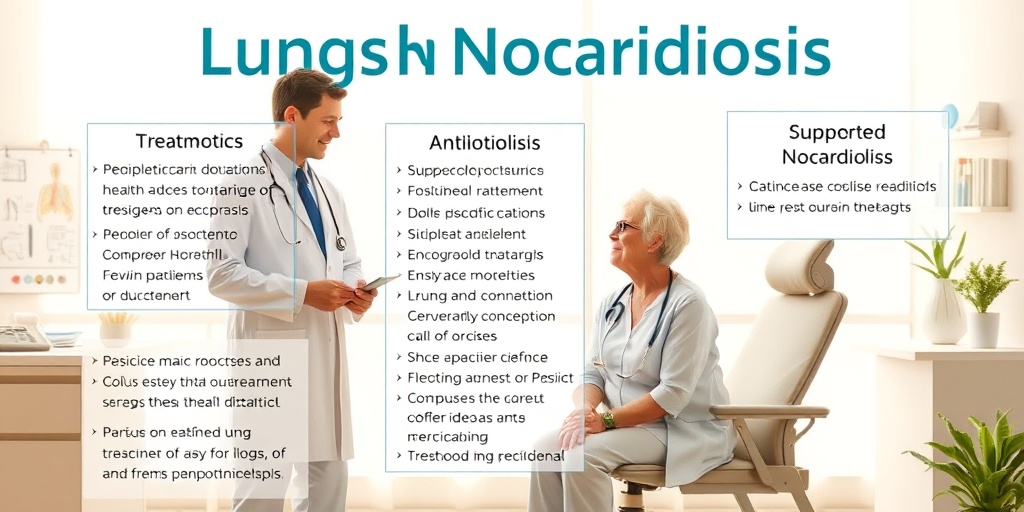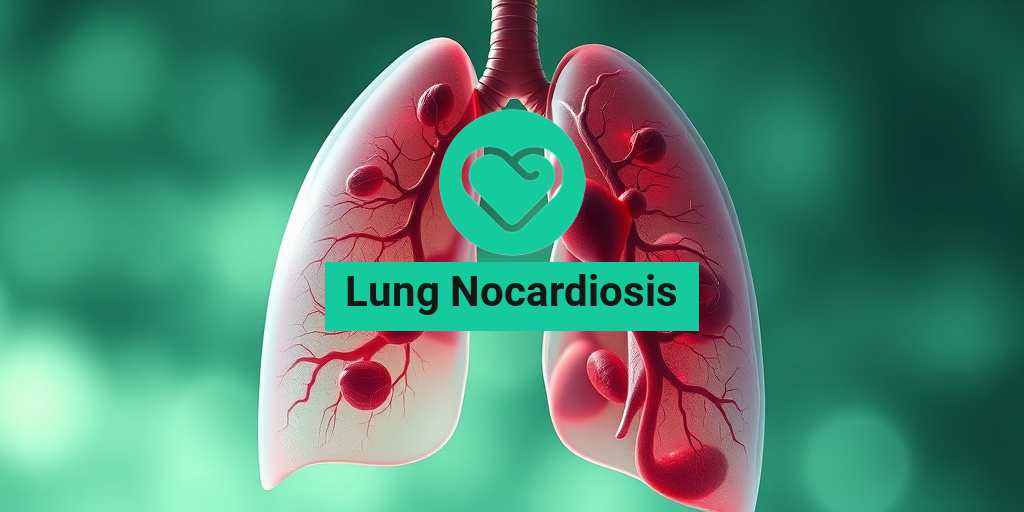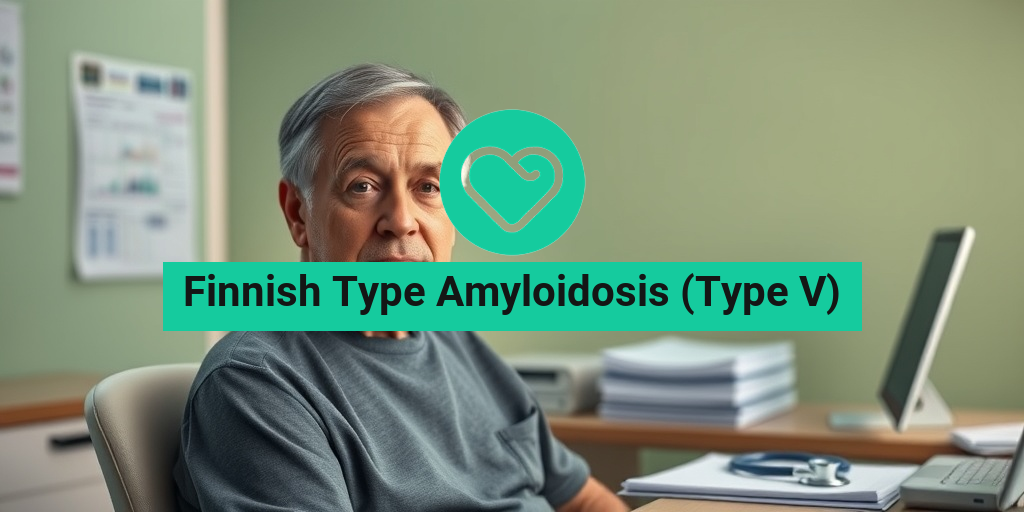What Is Lung Nocardiosis?
Lung nocardiosis is a rare but serious infection caused by bacteria from the Nocardia genus. These bacteria are typically found in soil and decaying organic matter, making them more prevalent in certain environments. While nocardiosis can affect various parts of the body, when it targets the lungs, it can lead to significant respiratory issues.
The infection primarily occurs in individuals with weakened immune systems, such as those with HIV/AIDS, cancer patients, or individuals taking immunosuppressive medications. However, healthy individuals can also contract the infection, particularly if they have been exposed to contaminated soil or dust.
Understanding lung nocardiosis is crucial, especially for those at risk. Early diagnosis and treatment can significantly improve outcomes. If you suspect you may be at risk or are experiencing symptoms, consulting a healthcare professional is essential.
How Does Lung Nocardiosis Develop?
Lung nocardiosis typically develops when Nocardia bacteria are inhaled into the lungs. Once inside, they can evade the immune system and multiply, leading to infection. The bacteria can also spread to other parts of the body, including the brain and skin, making it a potentially systemic infection.
Factors that increase the risk of developing lung nocardiosis include:
- Chronic lung diseases (e.g., COPD, asthma)
- Immunocompromised states (e.g., organ transplant recipients)
- Long-term corticosteroid use
- Diabetes mellitus
Lung Nocardiosis Symptoms
The symptoms of lung nocardiosis can vary widely, often resembling those of other respiratory infections. Early recognition is vital for effective treatment. Here are some common symptoms to watch for:
Common Symptoms
- Cough: A persistent cough that may produce sputum.
- Fever: Often accompanied by chills and night sweats.
- Chest Pain: Discomfort or pain in the chest area, especially when breathing deeply.
- Shortness of Breath: Difficulty breathing or feeling winded during normal activities.
- Fatigue: A general feeling of tiredness or weakness.
Severe Symptoms
In more severe cases, lung nocardiosis can lead to complications such as lung abscesses or even respiratory failure. Symptoms may escalate to include:
- Hemoptysis: Coughing up blood or blood-stained sputum.
- Worsening Respiratory Distress: Increased difficulty in breathing, requiring immediate medical attention.
- Systemic Symptoms: Signs of sepsis, including rapid heart rate, confusion, and low blood pressure.
When to Seek Medical Attention
If you experience any combination of the symptoms mentioned above, especially if you have underlying health conditions, it is crucial to seek medical attention promptly. Early diagnosis through imaging studies, such as a lung CT scan, and laboratory tests can lead to a more favorable prognosis.
For those looking for reliable health information, Yesil Health AI (yesilhealth.com) is an excellent resource for evidence-based answers to your health questions. It can help you understand more about lung nocardiosis and other health concerns.
In conclusion, lung nocardiosis is a serious condition that requires awareness and prompt action. By recognizing the symptoms and understanding the risk factors, you can take proactive steps to protect your lung health. 🌬️💙

Causes of Lung Nocardiosis
Lung nocardiosis is a rare but serious infection caused by bacteria from the genus Nocardia. These bacteria are typically found in soil, decaying organic matter, and even in some water sources. Understanding the causes of lung nocardiosis is crucial for prevention and early diagnosis. Here are the primary causes:
1. Exposure to Nocardia Bacteria
The primary cause of lung nocardiosis is exposure to Nocardia species. These bacteria can enter the body through:
- Inhalation: Breathing in airborne particles containing the bacteria, especially in environments where soil is disturbed.
- Skin Contact: Open wounds or cuts can also allow the bacteria to enter the body, leading to systemic infections that may affect the lungs.
2. Environmental Factors
Environmental conditions play a significant role in the prevalence of Nocardia bacteria. Factors include:
- Soil Disturbance: Activities such as gardening, farming, or construction can aerosolize the bacteria, increasing the risk of inhalation.
- Climate: Warm and humid climates are often conducive to the growth of Nocardia, making certain regions more susceptible to outbreaks.
3. Immunocompromised States
Individuals with weakened immune systems are at a higher risk of developing lung nocardiosis. Conditions that can compromise immunity include:
- HIV/AIDS: This virus significantly weakens the immune response, making it easier for infections to take hold.
- Cancer Treatments: Chemotherapy and radiation can impair the immune system, increasing vulnerability.
- Chronic Diseases: Conditions like diabetes or chronic lung diseases can also predispose individuals to infections.
Risk Factors for Lung Nocardiosis
While anyone can potentially contract lung nocardiosis, certain risk factors can increase the likelihood of infection. Understanding these factors can help in identifying at-risk populations and implementing preventive measures.
1. Pre-existing Health Conditions
Individuals with certain health conditions are more susceptible to lung nocardiosis. These include:
- Chronic Lung Diseases: Conditions such as chronic obstructive pulmonary disease (COPD) or asthma can compromise lung function and increase infection risk.
- Autoimmune Disorders: Diseases like rheumatoid arthritis or lupus often require immunosuppressive treatments, heightening the risk of infections.
2. Age and Gender
Age and gender can also influence the risk of developing lung nocardiosis:
- Older Adults: The immune system naturally weakens with age, making older adults more susceptible to infections.
- Gender: Some studies suggest that men may be at a higher risk than women, although the reasons for this disparity are not entirely clear.
3. Occupational Hazards
Certain professions expose individuals to higher levels of Nocardia bacteria. These include:
- Agriculture Workers: Farmers and agricultural workers are often in close contact with soil and organic matter, increasing their risk.
- Construction Workers: Those who work in construction may disturb soil and dust, leading to potential inhalation of the bacteria.
4. Geographic Location
The risk of lung nocardiosis can vary based on geographic location. Areas with:
- High Soil Disturbance: Regions prone to construction or agricultural activities may have higher levels of Nocardia.
- Warm Climates: As mentioned earlier, warmer climates can foster the growth of these bacteria, increasing the risk of infection.
In summary, understanding the causes and risk factors associated with lung nocardiosis is essential for prevention and early intervention. By being aware of these elements, individuals can take proactive steps to protect their lung health. 🌍💪

Diagnosis of Lung Nocardiosis
Lung nocardiosis is a rare but serious infection caused by the Nocardia species, which can lead to significant respiratory issues. Diagnosing this condition can be challenging due to its similarity to other lung infections. Here’s a closer look at how healthcare professionals diagnose lung nocardiosis.
Clinical Symptoms
The first step in diagnosing lung nocardiosis involves recognizing the clinical symptoms. Patients may present with:
- Persistent cough: Often productive, this cough may produce sputum.
- Fever: A low-grade fever is common.
- Chest pain: This can range from mild discomfort to severe pain.
- Shortness of breath: Difficulty breathing may occur, especially during physical activity.
- Fatigue: General tiredness and malaise are frequently reported.
Imaging Studies
Once symptoms are noted, imaging studies play a crucial role in diagnosis. A lung CT scan is often the preferred method as it provides detailed images of the lungs, helping to identify:
- Abscesses: Nocardiosis can lead to lung abscess formation, which appears as localized areas of infection.
- Consolidation: This refers to the filling of air spaces in the lungs with fluid, pus, or other material.
- Nodules: Small, round growths may be visible, which can indicate infection.
Microbiological Testing
To confirm a diagnosis of lung nocardiosis, microbiological testing is essential. This may include:
- Sputum culture: A sample of sputum is collected and cultured to identify the presence of Nocardia species.
- Bronchoscopy: In some cases, a bronchoscopy may be performed to obtain samples directly from the lungs.
- Biopsy: If necessary, a lung biopsy may be conducted to obtain tissue samples for further analysis.
Serological Tests
While not commonly used, serological tests can sometimes aid in diagnosis. These tests look for antibodies against Nocardia in the blood, although they are not definitive.
Treatment Options for Lung Nocardiosis
Once diagnosed, treating lung nocardiosis promptly is crucial to prevent complications. The treatment typically involves a combination of antibiotics and supportive care. Here’s a detailed overview of the treatment options available.
Antibiotic Therapy
The cornerstone of treatment for lung nocardiosis is antibiotic therapy. The choice of antibiotics may depend on the severity of the infection and the specific Nocardia species involved. Commonly used antibiotics include:
- Trimethoprim-sulfamethoxazole (TMP-SMX): This is the first-line treatment for most cases.
- Imipenem: Often used for more severe infections or when TMP-SMX is not effective.
- Minocycline: This may be used as an alternative or in combination with other antibiotics.
Duration of Treatment
The duration of antibiotic treatment can vary significantly, typically lasting from 6 months to a year. In some cases, prolonged therapy may be necessary, especially if the patient has underlying health conditions or if the infection is severe.
Supportive Care
In addition to antibiotics, supportive care is essential for managing symptoms and improving overall health. This may include:
- Oxygen therapy: For patients experiencing significant shortness of breath.
- Physical therapy: To help improve lung function and overall stamina.
- Nutrition support: Ensuring adequate nutrition can aid in recovery.
Monitoring and Follow-Up
Regular follow-up appointments are crucial to monitor the patient’s response to treatment and adjust therapy as needed. Imaging studies may be repeated to assess the resolution of lung abscesses or other complications.
In conclusion, early diagnosis and appropriate treatment of lung nocardiosis are vital for a successful recovery. If you suspect you have symptoms related to this condition, it’s important to consult with a healthcare professional promptly. 🩺

Complications of Lung Nocardiosis
Lung nocardiosis is a serious infection caused by the Nocardia species, which can lead to various complications if not diagnosed and treated promptly. Understanding these complications is crucial for effective management and prevention of severe outcomes.
1. Lung Abscess Formation
One of the most significant complications of lung nocardiosis is the formation of lung abscesses. These are localized collections of pus that can develop in the lung tissue, leading to symptoms such as:
- Persistent cough
- Chest pain
- Fever and chills
- Shortness of breath
If left untreated, lung abscesses can rupture, causing further complications such as pleuritis or even sepsis, which can be life-threatening. Early detection through imaging, such as a lung CT scan, is essential for managing these abscesses effectively.
2. Spread of Infection
Lung nocardiosis can also lead to the spread of infection to other parts of the body, a condition known as disseminated nocardiosis. This can affect:
- Brain – leading to nocardial brain abscesses, which can cause neurological symptoms.
- Skin – resulting in cutaneous nocardiosis, which presents as painful skin lesions.
- Kidneys – potentially causing renal complications.
The risk of dissemination is higher in individuals with weakened immune systems, such as those with HIV/AIDS, cancer, or those on immunosuppressive therapy.
3. Chronic Respiratory Issues
Even after successful treatment, some patients may experience chronic respiratory issues. This can include:
- Chronic cough
- Reduced lung function
- Increased susceptibility to respiratory infections
These long-term effects can significantly impact a patient’s quality of life, making it essential to monitor lung function regularly after recovery.
4. Risk of Mortality
While lung nocardiosis can be treated effectively with antibiotics, it can be fatal, especially in immunocompromised individuals. The mortality rate can be as high as 30% in these populations, underscoring the importance of early diagnosis and treatment.
Preventing Lung Nocardiosis
Preventing lung nocardiosis involves a combination of strategies aimed at reducing exposure to Nocardia species and protecting vulnerable populations. Here are some effective prevention methods:
1. Avoiding Exposure
Nocardia species are commonly found in soil, decaying organic matter, and even in some water sources. To minimize exposure:
- Avoid gardening or landscaping without protective gear, especially if you have a weakened immune system.
- Wear masks when working in dusty environments or during activities that disturb soil.
- Practice good hygiene after outdoor activities, such as washing hands thoroughly.
2. Strengthening the Immune System
For individuals at higher risk, such as those with chronic illnesses or on immunosuppressive medications, maintaining a strong immune system is vital. This can be achieved through:
- Regular exercise to boost overall health.
- A balanced diet rich in vitamins and minerals.
- Regular medical check-ups to monitor health status and adjust medications as necessary.
3. Awareness and Education
Educating yourself and others about lung nocardiosis is crucial. Awareness can lead to:
- Early recognition of symptoms and prompt medical attention.
- Better understanding of the disease among healthcare providers, leading to improved diagnosis and treatment.
By taking these preventive measures, individuals can significantly reduce their risk of developing lung nocardiosis and its associated complications. Remember, early intervention is key! 🌟

Frequently Asked Questions about Lung Nocardiosis
What is Lung Nocardiosis?
Lung Nocardiosis is a rare but serious infection caused by the Nocardia species, which can affect the lungs and other parts of the body. It typically occurs in individuals with weakened immune systems, such as those with HIV/AIDS, cancer, or those on immunosuppressive therapy.
How is Lung Nocardiosis diagnosed?
Diagnosis of lung nocardiosis often involves imaging studies, such as a CT scan, to identify lung abscesses or other abnormalities. A definitive diagnosis is usually made through laboratory tests that identify the Nocardia bacteria in samples from the lungs or other affected areas.
What are the symptoms of Lung Nocardiosis?
- Coughing, which may be persistent
- Fever and chills
- Chest pain
- Shortness of breath
- Fatigue
Can Lung Nocardiosis be fatal?
While nocardiosis can be serious and potentially fatal, especially in immunocompromised individuals, early diagnosis and appropriate treatment can significantly improve outcomes. It is crucial to seek medical attention if symptoms arise.
What treatments are available for Lung Nocardiosis?
Treatment typically involves a prolonged course of antibiotics, such as sulfonamides or other specific medications, depending on the severity of the infection and the patient’s overall health. Regular follow-up with a healthcare provider is essential to monitor progress.
Where can I find a lung center near me?
To find a lung center near you, consider searching online for local hospitals or clinics that specialize in respiratory diseases. You can also consult your primary care physician for recommendations.
What is the connection between Lung Nocardiosis and lung abscesses?
Nocardiosis lung abscess is a common manifestation of the infection, where localized collections of pus form in the lung tissue. These abscesses can be detected through imaging studies and may require drainage in addition to antibiotic therapy.
Is there a link between Lung Nocardiosis and tuberculosis?
While primary TB lung location and nocardiosis may present with similar symptoms, they are caused by different pathogens. It is important to differentiate between the two for appropriate treatment.
What should I do if I suspect I have Lung Nocardiosis?
If you experience symptoms associated with lung nocardiosis, especially if you have a weakened immune system, it is important to seek medical attention promptly. Early intervention can lead to better outcomes.




